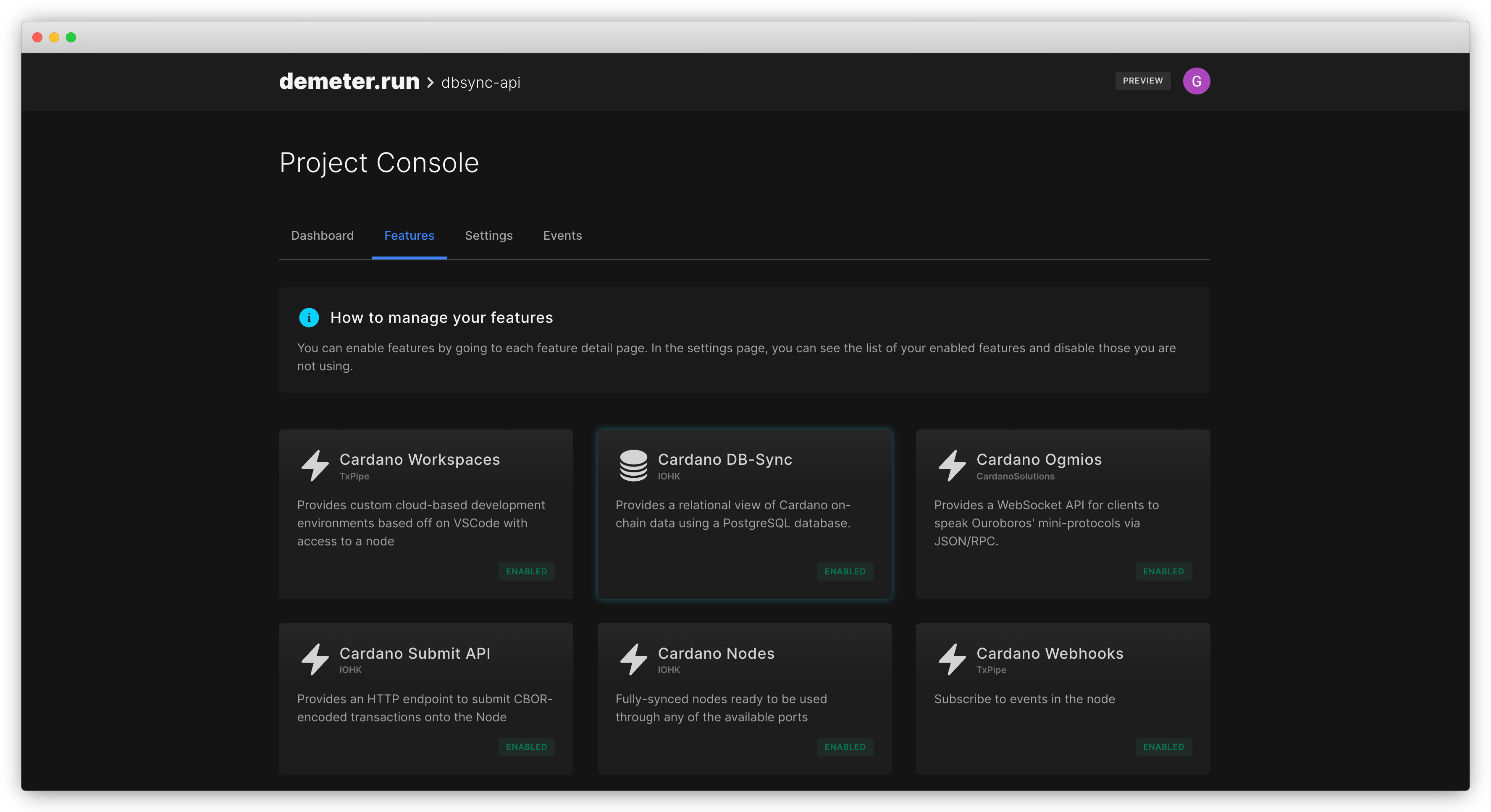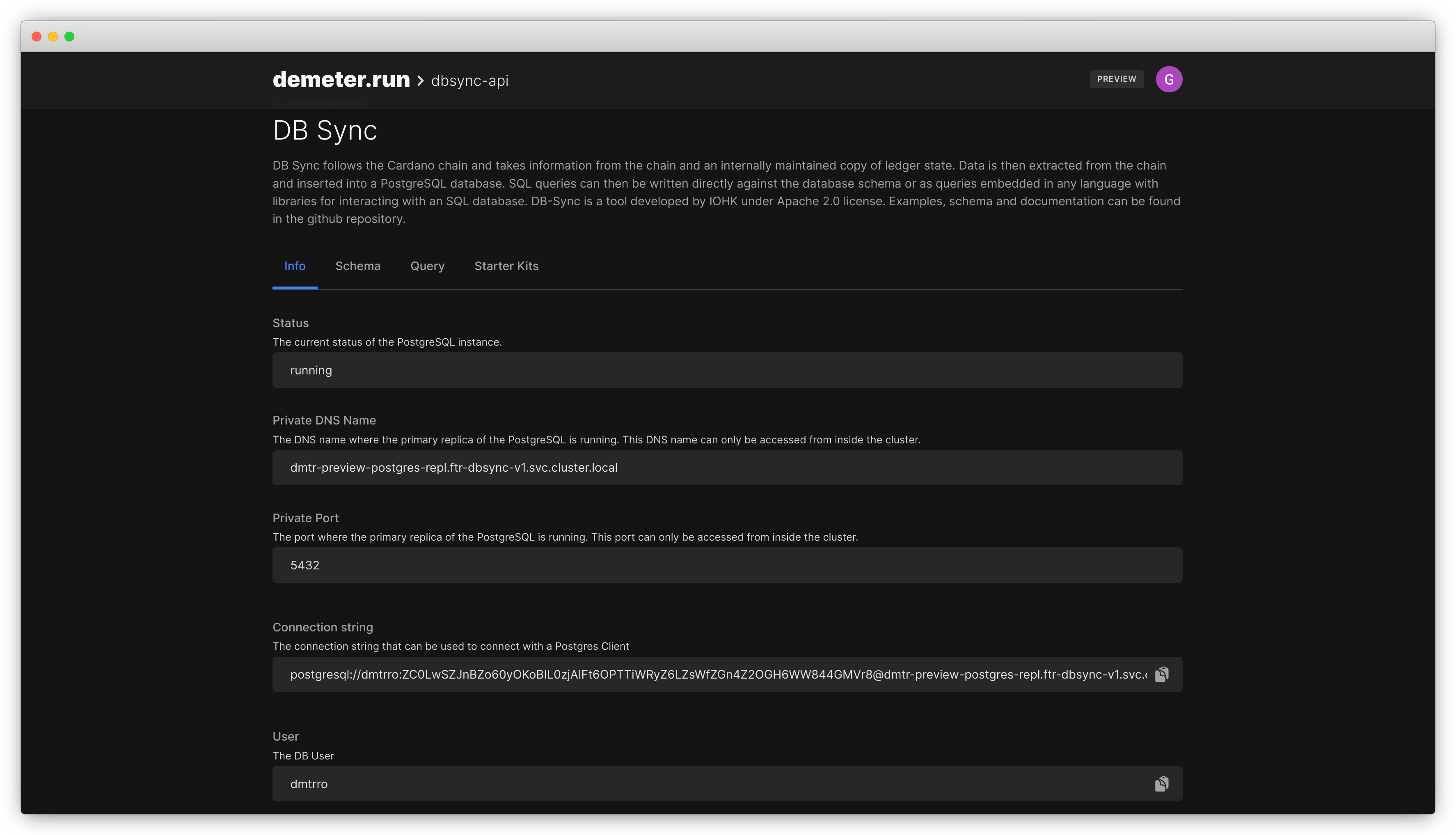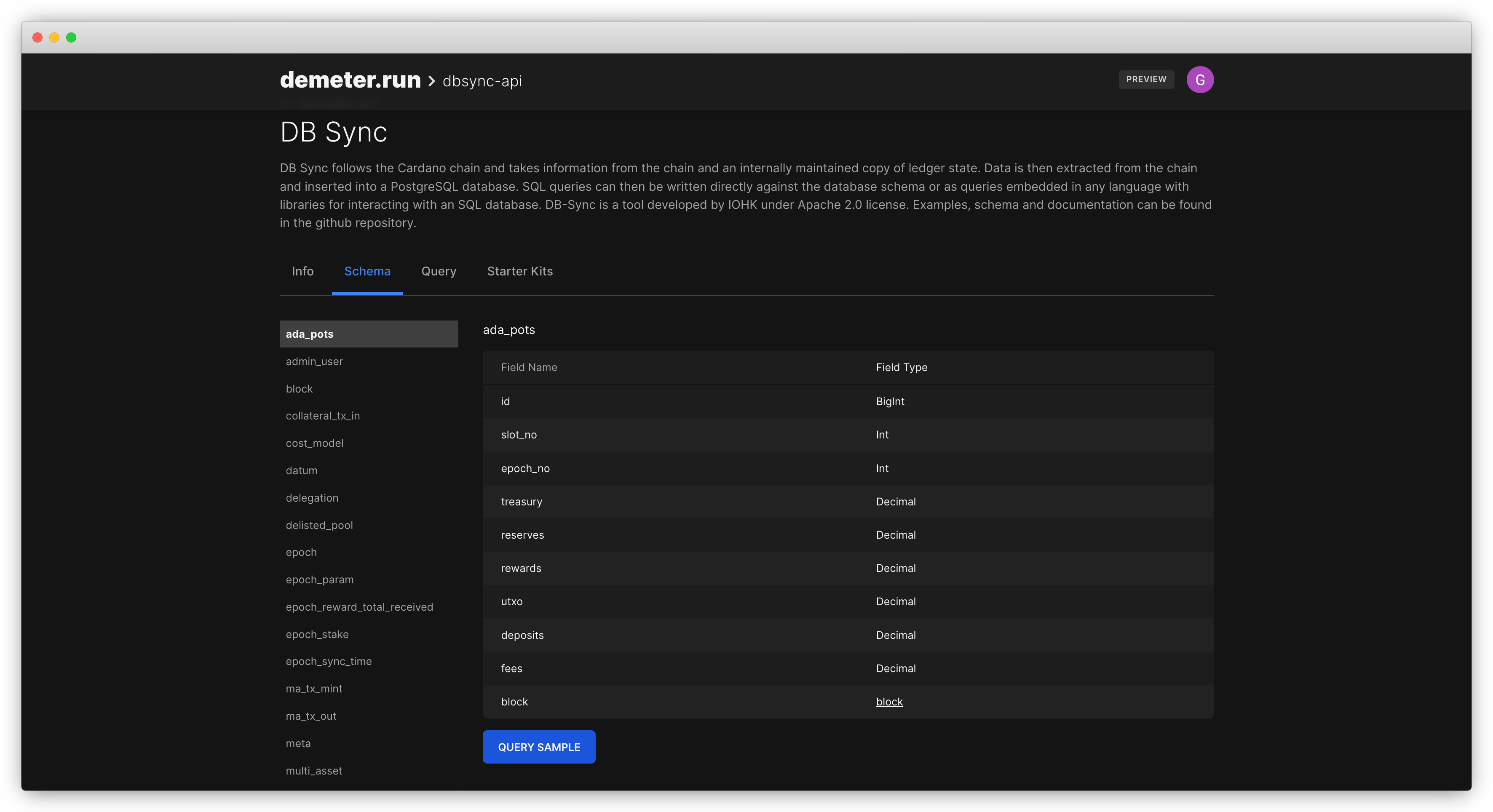This starter kit shows how you can start building a simple REST API to query assets data from DB-sync.
For executing this starter kit you'll need access to a running DB-sync instance in sync with a Node running on the network of your preference.
In case you don't want to install the required components yourself, you can use Demeter.run platform to create a cloud environment with access to common Cardano infrastructure. The following command will open this repo in a private, web-based VSCode IDE with access to a running DB-Sync instance in the preview network.
This Starter Kit implements a very simple REST API with a single GET endpoint for querying Assets information for a given Policy Id.
The server is a NodeJs application using ExpressJS and Typescript.
We have implemented the API following the clean architecture principles, making it easy to include new endpoints, data sources and use cases.
For connecting with the database layer we have chosen to use Prisma which provides us with a great development experience when it comes to access and querying db-sync.
From the web-based workspace open a new Terminal and run the following commands for installing the dependencies:
$ npm installNext we need to get Prisma initialized and connected against our db-sync instance.
npx prisma initNow we should have 2 new files generated in our repository:
prisma.schema.env
If you open prisma.schema you will notice the schema is empty:
// This is your Prisma schema file,
// learn more about it in the docs: https://pris.ly/d/prisma-schema
generator client {
provider = "prisma-client-js"
}
datasource db {
provider = "postgresql"
url = env("DATABASE_URL")
}For pulling the db-sync schema we are going to use the Demeter.run DB-Sync feature.
Open your project Console in Demeter.run and go to the DB-Sync feature from the list.
Go into the feature detail and copy the value of the Connection string field.
You can now replace the content of the DATABASE_URL variable in the .env file generated by npx prisma init with this information:
# Environment variables declared in this file are automatically made available to Prisma.
# See the documentation for more detail: https://pris.ly/d/prisma-schema#accessing-environment-variables-from-the-schema
# Prisma supports the native connection string format for PostgreSQL, MySQL, SQLite, SQL Server, MongoDB and CockroachDB.
# See the documentation for all the connection string options: https://pris.ly/d/connection-strings
DATABASE_URL="postgresql://dmtrro:ZC0LwSZJnBZo60yOKoBIL0zjAIFt6OPTTiWRyZ6LZsWfZGn4Z2OGH6WW844GMVr8@dmtr-preview-postgres-repl.ftr-dbsync-v1.svc.cluster.local:5432/cardanodbsync?schema=public"Once the .env file is updated go back to the terminal and run the following command:
npx prisma db pull
npx prisma generateThis command should have generated the high level Typescript objects for accessing DB-Sync from our code.
If you check the prisma.schema file again you should see its now updated with the schema definition of db-sync.
generator client {
provider = "prisma-client-js"
}
datasource db {
provider = "postgresql"
url = env("DATABASE_URL")
}
model ada_pots {
id BigInt @id @default(autoincrement())
slot_no BigInt
epoch_no Int
treasury Decimal @db.Decimal(20, 0)
reserves Decimal @db.Decimal(20, 0)
rewards Decimal @db.Decimal(20, 0)
utxo Decimal @db.Decimal(20, 0)
deposits Decimal @db.Decimal(20, 0)
fees Decimal @db.Decimal(20, 0)
block_id BigInt @unique(map: "unique_ada_pots")
block block @relation(fields: [block_id], references: [id], onDelete: Cascade, onUpdate: Restrict)
} ...Feel free to explore the schema from this file, or you can use the Schema tab inside of the DB-Sync feature of Demeter.run for browsing the available tables.
For our REST API we have implemented a data source in assetsDataSource.ts. You can check DBSyncAssetsDataSource for how we are using Prisma for querying DB-Sync and returning the Assets information mapped to a high-level object:
async getForPolicyId(policyId: string): Promise<Asset[]> {
const multiAssets = await this.client.multi_asset.findMany({
where: {
policy: Buffer.from(policyId, 'hex'),
},
include: {
ma_tx_mint: true,
}
});
return multiAssets.map((m) => {
const asset = mapAsset(m);
m.ma_tx_mint.forEach((t) => {
asset.quantity += t.quantity.toNumber();
});
return asset;
});
}Once we have Prisma connected to our DB-Sync instance we can build and run the application. Go back to the terminal and execute the following commands:
npm run build
npm run devYour application should be now running in localhost:8000
If you want to test your API from outside of the workspace environment we need to expose the workspace port where the application is running.
For doing this in the Demeter.run console go to your workspaces, select the workspace where you are running the starter kit and go to the Exposed Ports tab.
From this tab you can select to expose a new port.
Once your port is exposed you can try a GET request to the auto-generated URL from your web browser
Example request with a policy id from the preview network:
https://8000-slippery-sympathy-7n7uxh.us1.demeter.run/assets/policy/f5335f99c169cf2cbec9c6405750b533c011b24705590b800aa54cd6The response we get for the given policy id:
[{
"id": "118",
"fingerprint": "asset1uxw6angvk9tvaa79u98xw44tcqf6hflur3jr34",
"name": "HOSKYt_Spectrum_Lq",
"policyId": "f5335f99c169cf2cbec9c6405750b533c011b24705590b800aa54cd6",
"quantity": 9223372036854776000
}]




